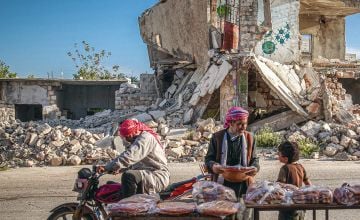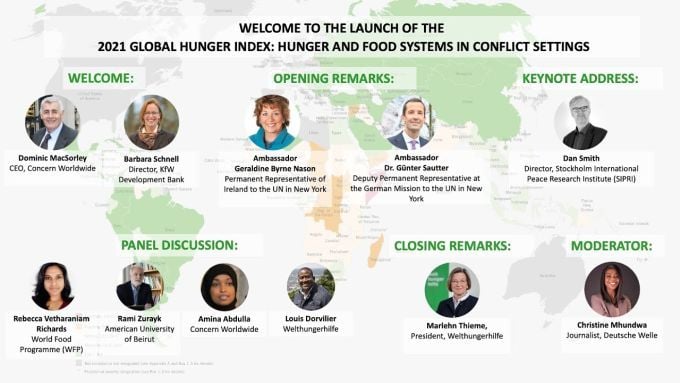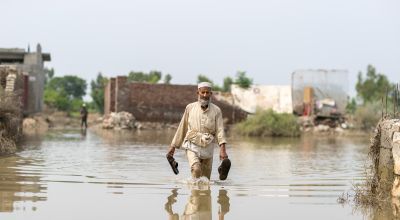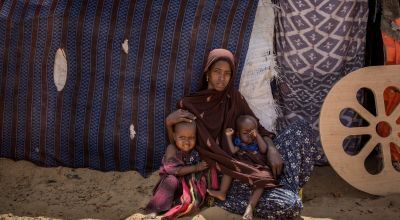
Read our 2024 annual report

Knowledge Hub
The 2022 Global Hunger Index (GHI) report is set to be published on October 13th. While this is a big deal amongst humanitarian organisations, you may not have heard of the GHI, or may not understand it. Before the release of the latest report, here is an explainer on how the index is calculated, and what it means for the status of global hunger today.
What is the Global Hunger Index?
The Global Hunger Index is a tool that measures and tracks hunger nationally, regionally and globally. The report is prepared by Concern Worldwide and the European NGO and our Alliance2015 partner Welthungerhilfe.
Scores are calculated and assigned to countries around the world to assess progress and setbacks in combating hunger worldwide, and to give a picture of hunger across different regions and the world.
According to the GHI website, the index is “designed to raise awareness and understanding of the struggle against hunger, provide a way to compare levels of hunger between countries and regions, and to call attention to those areas of the world where hunger levels are highest and where the need for additional efforts to eliminate hunger is greatest”.
How is the GHI calculated?
The score of a country is calculated based on four indicators - undernourishment, child stunting, child wasting, and child mortality.
- 1
Undernourishment
This refers to the share of the population that is undernourished, or whose caloric intake is insufficient.
- 2
Child stunting
This refers to the share of children under the age of five who have low height for their age, reflecting chronic undernutrition.
- 3
Child wasting
This refers to the share of children under the age of five who have low weight for their height, reflecting acute undernutrition.
- 4
Child mortality
This refers to the mortality rate of children under the age of five.
Each indicator is given a standardised score on a 100-point scale based on the highest observed level for the indicator on a global scale in recent decades. The scores are then aggregated to calculate the GHI score for each country.
These scores place a country along a severity scale:
Low = less than or equal to 9.9
Moderate = 10.0 - 19.9
Serious = 20.0 - 34.9
Alarming = 35.0 - 49.9
Extremely alarming = less than or equal to 50.0
So, high scores across the indicators will give a country a score that places them at serious, alarming or extremely alarming levels of hunger, while a lower aggregated score classifies a country as low or moderate.
The data used to compile these scores comes from a number of sources, including UNICEF, the World Health Organisation (WHO), the World Bank, the Food and Agriculture Organisation of the United Nations (FAO), the United Nations Interagency Group for Child Mortality Estimation (UN IGME), and the Global Database on Child Growth and Malnutrition.
Not all countries are given a GHI score. Some high-income countries where the prevalence of hunger is low, and where child mortality does not reflect malnutrition to the same extent as it does in lower-income countries, are not scored on the index; countries with small populations, such as Belize, are also left off. Other countries are given provisional scores due to a lack of up-to-date data across the four indicators.

What was in the 2021 report?
Each GHI report has a theme - the 2021 report’s theme was “Hunger and Food Systems in Conflict Settings”. This edition took data from between 2018 and 2020, and therefore took into account the devastating effect of the COVID-19 pandemic on the world’s progress towards zero hunger.
The report read: “The 2021 Global Hunger Index points to a grim hunger situation fuelled by a toxic cocktail of the climate crisis, the COVID-19 pandemic, and increasingly severe and protracted violent conflicts. Progress toward Zero Hunger by 2030, already far too slow, is showing signs of stagnating or even being reversed.” It stated that based on projections, the world as a whole, and 47 countries in particular, would fail to achieve a low level of hunger by 2030.
Somalia received the highest score on the 2021 GHI, and with a score of 50.8, was designated as suffering from an extremely alarming level of hunger. Another five countries - Central African Republic, Chad, Democratic Republic of Congo, Madagascar and Yemen - were classed as having an alarming level of hunger, with hunger in Burundi, Comoros, South Sudan and Syria provisionally classed as alarming. Hunger was at a serious level in a further 31 countries.
The report shone a light on the link between conflict and hunger, and stated: “Without resolving food insecurity, it will be difficult to build sustainable peace, and without peace the likelihood of ending global hunger is minimal.”
What will be in the 2022 report?
The full report will be published on October 13th on the GHI website, but other recent reports point towards a grim picture of global hunger.
The United Nations’ State of Food Security and Nutrition In The World report was published in July 2022, and found that as many as 828 million were affected by hunger in 2021 - an increase of about 46 million since 2020 and 150 million since the outbreak of the COVID-19 pandemic.
The Global Report on Food Crises, published in May, also found that 193 million people in 53 countries faced acute food insecurity, meaning they were unable to consume enough adequate food, putting their lives or livelihoods in immediate danger.






